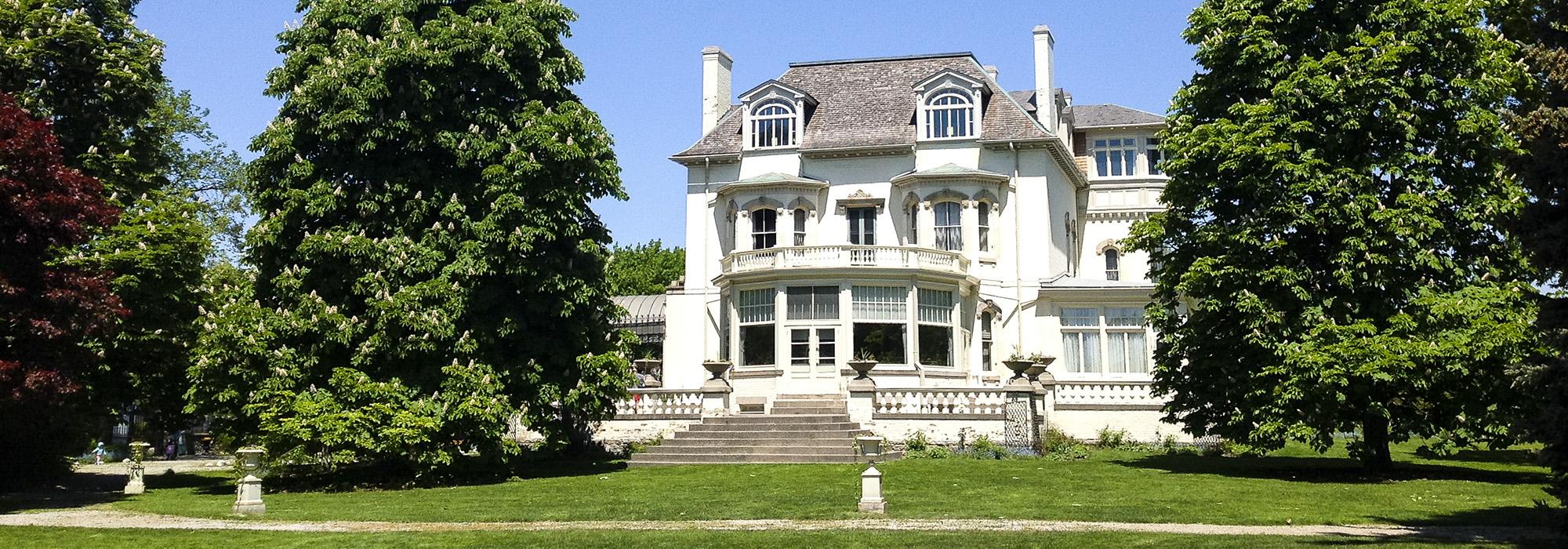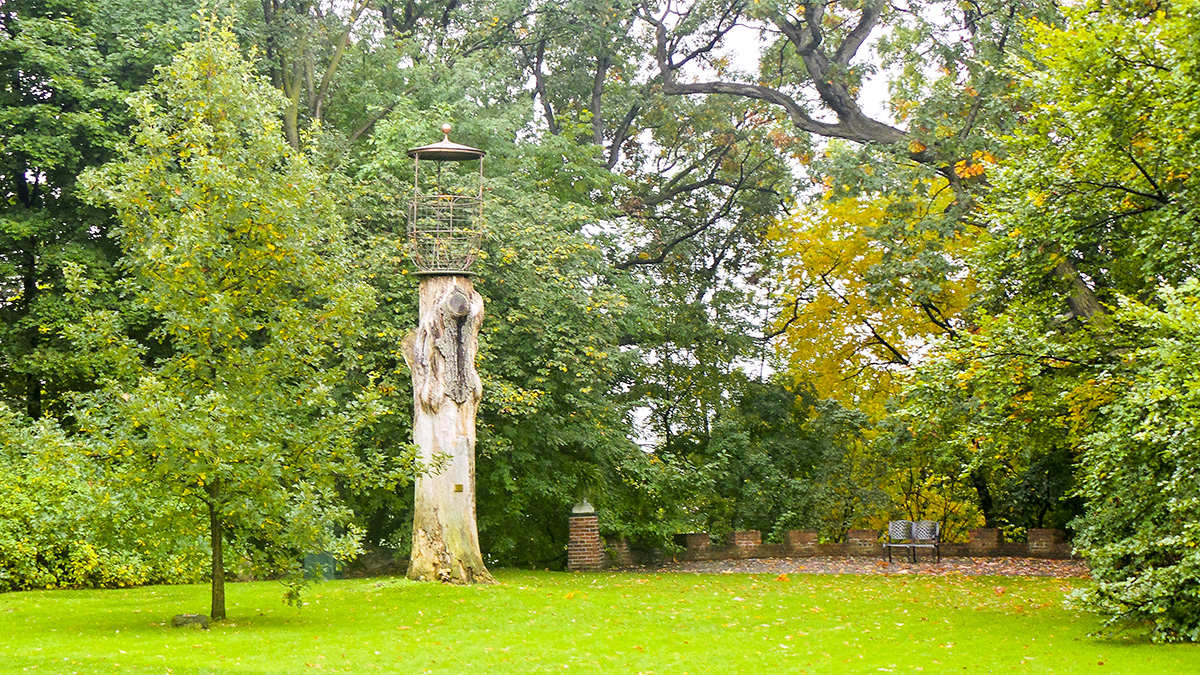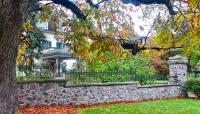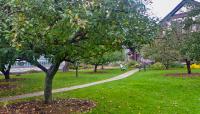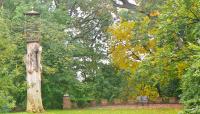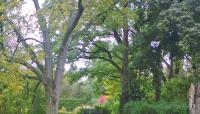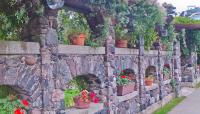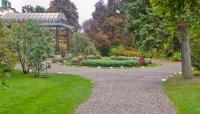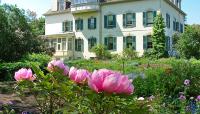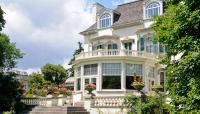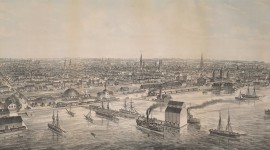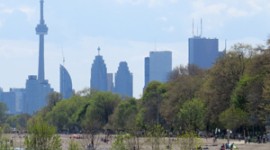Landscape Information
Built in 1866 by James and Susan Austin, this Second Empire style mansion and English style landscape occupy some 2.4 hectares atop Davenport Hill, derived from the 80-acre estate of Dr. William Baldwin, who built his home there in 1818. The property, reduced to 32 hectares, was purchased by Austin, and in the 1890s passed to his son Albert, who carried out renovations and additions to the house and grounds, including the construction of a greenhouse designed by Lord & Burnham in 1913. Utilized for farming, the land was subdivided over the years and in 1978, the City of Toronto and the Ontario Heritage Trust acquired the mansion and the surrounding 2.4 hectares. In the early 1980s, the Garden Club of Toronto returned the grounds to their early-twentieth-century state.
Entering from the west through a gate in the surrounding fieldstone wall—embellished by arched niches—a carriage drive encircles planting beds and passes beneath the glass-and-wrought-iron porte-cochère. A path across the lawn below the southern terrace traces the original carriageway, while farther south lays the battery. North of the mansion are the greenhouse, garage, gardener’s cottage, and historic grape arbor, extending through the apple orchard. To its east is a large parterre garden, and planted with vegetables and herbs surrounded by perennials and annuals, while squash and other crops grow behind a cedar hedge. In 1976, Spadina House was designated a heritage property under the Ontario Heritage Act. Owned jointly by the Province of Ontario and the City of Toronto, it has been operated as a museum by the City since 1984, and the buildings and gardens are maintained by city staff.



